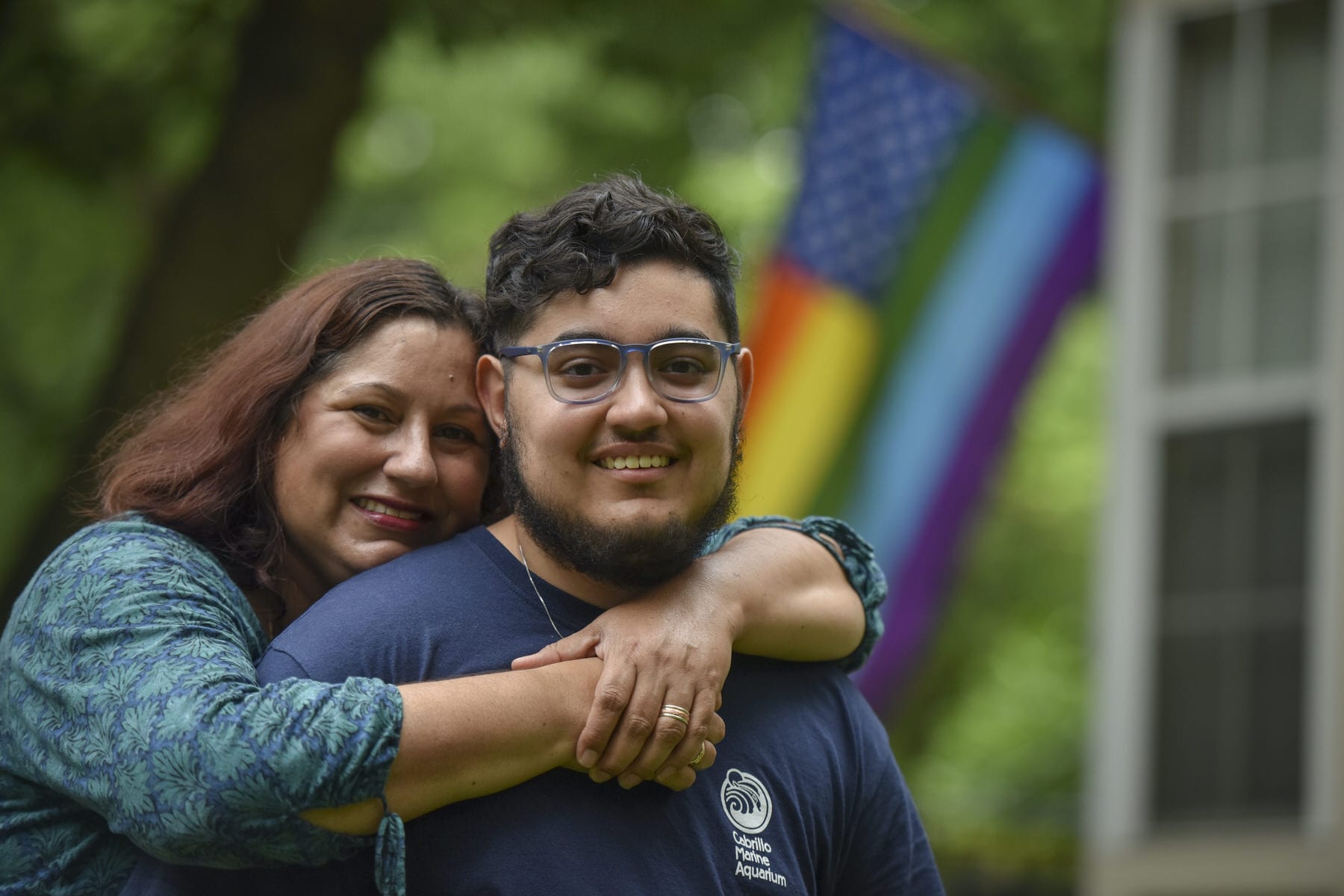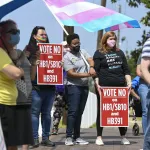The sex education that KC Slack received at their Ohio high school in the early aughts was scant.
“My own experience of sex ed was like two days of health class, which were dedicated to making us afraid of STIs and telling us that we weren’t allowed to have sex until we were married,” Slack recalled.
It wasn’t just a lack of information that Slack struggled with. The lessons sent the message that there was only one kind of sexual relationship: a heterosexual married one. Queer and trans people like Slack weren’t part of the curriculum.
Today, Slack is a sex educator in Los Angeles. Mostly private and charter schools — getting into public schools remains a challenge, Slack says — hire Slack and their colleagues to teach kids and teens all about navigating safety, desire and consent no matter your sexual orientation and gender identity. Work like Slack’s is critical for teaching LGBTQ+ youth how to protect themselves from STIs and comfortably navigate consent, experts say.
“Everything that I teach kids about sex and sexuality is stuff I didn’t get when I was young.” Slack said. “Two of the biggest things that are different … is the focus on consent, and the focus on that you are an expert on your own body.”
An increasing number of experts believe those lessons could also save lives.
2020 was the deadliest year on record for transgender people, with at least 44 murdered. Most of the victims were trans women of color. Already, this year is on track to outpace that. At least 22 transgender people have been killed in 2021, up from 16 the same time a year ago.
LGBTQ+ advocates say the pandemic — which has pushed transgender people further into poverty — and a flood of anti-transgender bills in statehouses across the nation have fueled what was already already a crisis.
But advocates think that queer-inclusive sex ed could play a part in curbing the murders.
Victoria Kirby York, deputy executive director of the LGBTQ+ advocacy organization National Black Justice Coalition (NBJC), believes that stopping that violence should start with telling kids that it’s OK to be attracted to transgender people. Many trans women are murdered by sexual or romantic partners.
“Some people, they’ve never had to think about the body part pieces until they’ve already become attracted to someone because of their personality and how they present,” Kirby York said. “And then when they get home or to a hotel room or backseat of a car, wherever they’re gonna have fun, as young people for the first time, ‘Oh, we got to figure out the body parts stuff.’”
Kirby York believes that if young people have time to process that attraction before sex, they would be better prepared to navigate complicated feelings about gender.
“If our children were taught to think about these things earlier, they wouldn’t be at a disadvantage,” Kirby York said. “There’s this perception that you are now othered because of your attraction, that you are less than because of who you are sexually attracted to or not attracted to, and that’s a really bad and troubling message for our kids.”
Kirby York also believes that education could help long-term partners of trans people, some of whom experience a late-stage “panic” over loving a trans person or justify violence against their partners because they are trans.
NBJC is advocating for queer-inclusive sex ed in schools nationwide. The organization is not alone. For years, national advocates have pushed for federal legislation that would mandate queer-inclusive sex ed. LGBTQ+ youth organization GLSEN has developed resources for schools looking to add queer-inclusive sex ed to their curriculums. The Human Rights Campaign contends that the majority of Americans support LGBTQ+-inclusive sex ed programs. A 2015 survey by the organization and Planned Parenthood found that while 85 percent of parents supported conversations about sexual orientation as part of sexual education, GLSEN found that just 12 percent of kids reported their schools even talked about “same-sex” relationships.
Research shows that more young people identify as LGBTQ+ than ever before. In February, Gallup reported that one in six youth ages 18 to 23 identified as something other than heterosexual.
Still, states largely aren’t teaching sex ed that responds to that reality, according to advocates. States make their own rules about what students should learn when it comes sex, relationships and biology. In many parts of the country, where lawmakers are pushing anti-transgender legislation, kids are also growing up without conversations about their own bodies, advocates say.
Grecia Magdaleno, policy and advocacy manager at LGBTQ+ youth organization Illinois Safe Schools Alliance, has been pushing for queer-inclusive sex education in Illinois, where four transgender people have been murdered in less than two years. The state doesn’t require districts to teach sex education, and many schools emphasize abstinence until marriage, Magdaleno said. Queer-inclusive sex ed would help all students, they argue.
“If it’s trans inclusive, that means that all students, whether they’re trans or not, are going to get information and learn about the community, and learn about that identity and the world that comes with it. And that in turn builds camaraderie,” they said. “It lowers disproportionate rates of violence, discrimination and harassment against, trans and gender expansive students, especially those who are people of color.”
Those conversations can help cisgender students, too. Slack says in their experience, most young people already have trans and nonbinary peers.
“What I noticed is that the kids who come in with some misgivings about [trans identity] or less information, as they learn more, not only do they become kinder to their classmates, they become kinder to themselves,” Slack said.
Slack believes that learning to be kind to yourself can be the ultimate violence prevention.
“All of us, really, we are asking ourselves to cut off pieces of our experience in order to fit into a normal and normative idea of how a person should be,” they said. “And when we aren’t encouraged to do that violence to ourselves, we are much less likely to do that violence to other people.”






